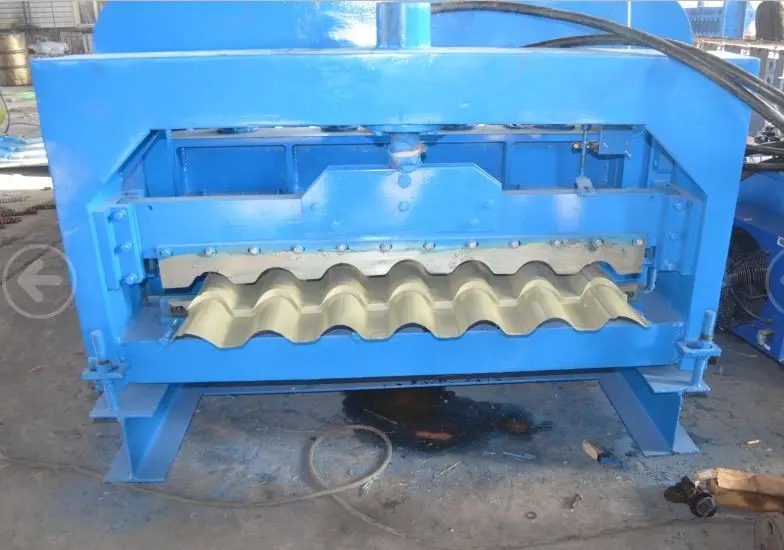
The Steel Door Frame Roll Forming Machine Revolutionizing Door Frame Production
The steel door frame roll forming machine represents a significant advancement in the manufacturing of door frames, providing efficiency, quality, and versatility to the construction and manufacturing industries. The necessity for durable and aesthetically pleasing door frames has surged in recent years, driving innovation in production processes, and roll forming technology has emerged as a preferred solution.
What is Roll Forming?
Roll forming is a continuous bending process in which a long strip of sheet metal is passed through a series of paired rollers. These rollers (or dies) gradually shape the metal into the desired profile. This technique is known for its efficiency and precision, allowing manufacturers to produce complex shapes while maintaining a high level of repeatability and consistency.
Features of Steel Door Frame Roll Forming Machines
The steel door frame roll forming machine is designed specifically to create steel door frames that meet diverse customer needs. Key features of these machines include
1. Customization Many roll forming machines can be tailored to produce various door frame profiles and sizes. This flexibility allows manufacturers to cater to specific requirements of architects, builders, and designers, ensuring that they can meet unique project demands.
2. High Productivity The automation of the roll forming process results in increased productivity. With the ability to produce steel door frames at high speeds, manufacturers can meet high-volume demands without sacrificing quality.
3. Material Efficiency Roll forming utilizes metal sheets efficiently, minimizing waste. The process is designed to maximize material usage, which not only reduces costs but also promotes sustainability in manufacturing.
4. Consistent Quality The precision of roll forming means that each frame produced is uniform in quality. This consistency is critical in construction where structural integrity and aesthetic appeal are paramount.

5. Durability and Strength Steel produced through roll forming is robust and long-lasting. Steel door frames are resistant to warping, corrosion, and damage, making them a preferred choice for both residential and commercial applications.
Applications of Steel Door Frames
Steel door frames produced by roll forming machines are utilized across various sectors. From residential homes to commercial buildings, steel frames offer a secure and elegant entryway. Some key applications include
- Commercial Buildings Steel door frames are often used in office buildings, retail spaces, and industrial facilities, where security and durability are essential.
- Residential Homes Increasingly, homeowners are choosing steel door frames for their strength and long lifespan. They provide a modern look while offering excellent protection against the elements.
- Security Applications High-security facilities demand the use of steel door frames to ensure the safety of their occupants. These frames are often utilized in government buildings, data centers, and financial institutions.
- Fire-rated Doors Steel door frames are integral in fire-rated door systems, providing additional fire resistance and ensuring compliance with safety codes.
Conclusion
The steel door frame roll forming machine is a pivotal piece of technology that has transformed the way door frames are manufactured. By combining efficiency, customization, and quality, these machines have allowed manufacturers to meet the growing demands of various sectors. As construction trends continue to evolve, the durability and adaptability of steel door frames produced through roll forming technology position them as a leading choice in modern architecture.
In summary, the steel door frame roll forming machine has not only enhanced production capabilities but has also contributed to the overall evolution of construction materials, aligning with modern needs for safety, sustainability, and design. As industries move forward, it is clear that this technology will play a vital role in shaping the future of architectural design and manufacturing.